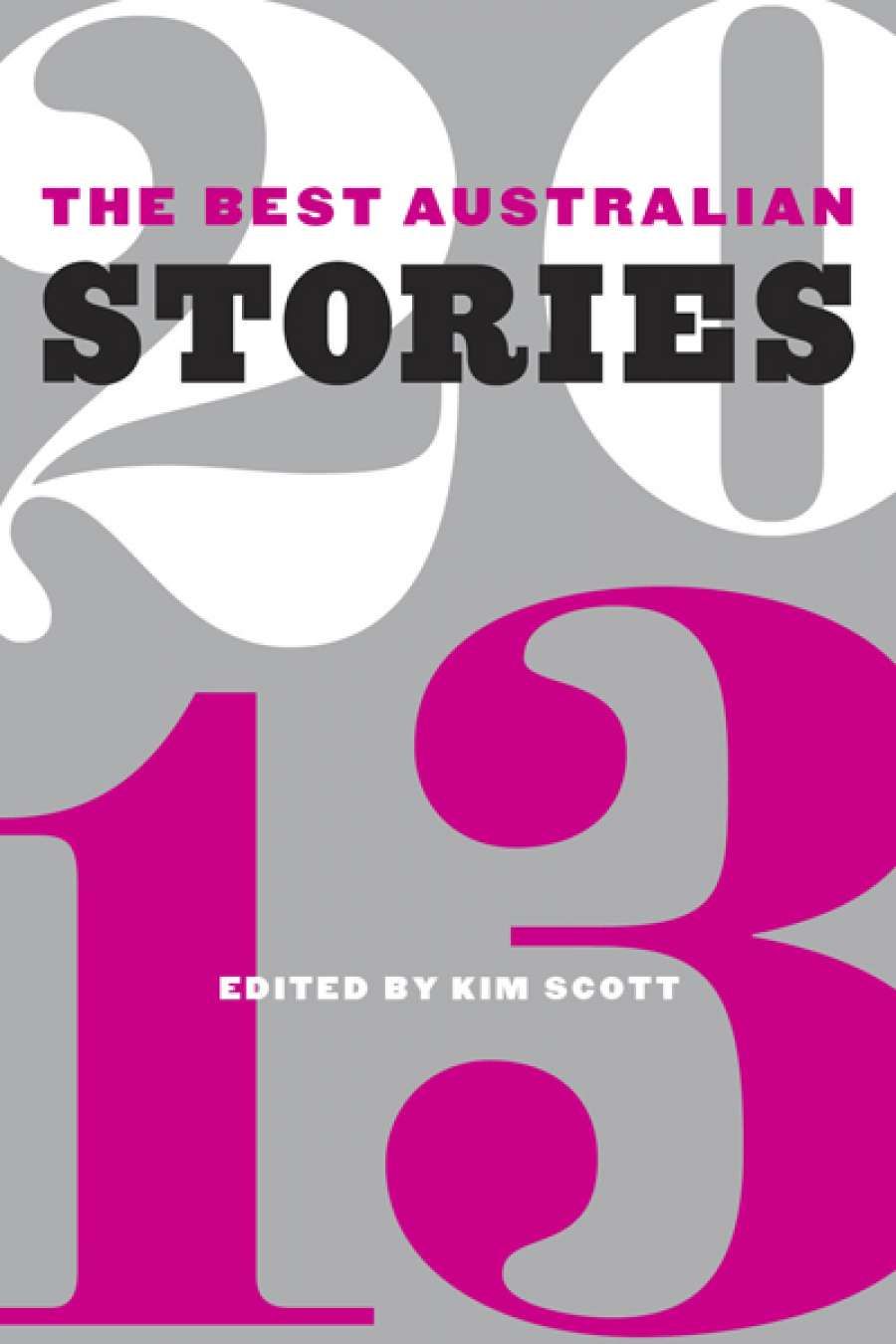
- Free Article: No
- Contents Category: Anthologies
- Review Article: Yes
- Article Title: The Best Australian Stories 2013
- Online Only: No
- Custom Highlight Text:
An American friend recently asked me to define the Australian short story. Despite misgivings, I muttered something about birth, landscape and setting, vernacular, diversity, then retreated. The Best Australian Stories 2013 provides a viable answer. Short stories don’t want to be defined; they are much too subversive for that. They only want to be read. The best ones will want to be read again, and will offer up something new each time.
- Grid Image (300px * 250px):

- Book 1 Title: The Best Australian Stories 2013
- Book 1 Biblio: Black Inc., $29.99 pb, 287 pp, 9781863956260
Modelled on The Best American Short Stories series, which began in 1915, the Australian incarnation is also edited by an eminent writer who is responsible for the year’s final selection. A specific delight in each year’s collection is encountering a new editor’s notion of ‘the best’. Naturally, each editor is compelled to define and defend ‘best’. Dual Miles Franklin-winner Kim Scott addresses the question head-on in his introduction to The Best Australian Stories 2013. ‘Of course my judgements are subjective,’ he says; and ‘yes, I’m defensive about this.’ Defending the selection is almost as unnecessary as any further discussion on the health of the short story in Australia. These stories are the best, according to Scott, and that’s enough.
While Scott has selected mostly realist stories, the collection feels eclectic; each story offers a contained and concentrated new world. A number of them have the capacity to permeate your imagination and become confused with your own memories, as do all fine stories.
Submissions were considered from individual authors’ collections, from writers who had been published in previous editions of the series, and from stories that appeared in twenty-one different publications between the Augusts of 2012 and 2013. Of the twenty-five stories selected, only three are previously unpublished: Liam Davison’s ‘Birdcall: 33˚21´N 43˚47´E’, Bruce Pascoe’s ‘Staff Dining’, and Sinead Roarty’s ‘Mortal Sins’, which was shortlisted for the 2013 Commonwealth Short Story Prize. Reviewers often complain of a lack of humour in short stories; there’s not a lot to be found in this collection either. Roarty’s story, though, despite its morbid topic of funerals and suicide and its underlying sadness, made me laugh several times. The strength of this story is in the dialogue, and the relationship between the ageing mother and middle-aged daughter is sharply drawn. Pascoe takes metaphor to a new place in his story about prison inmates on ‘Koorie day’ in ‘Staff Dining’. It contains wry humour and some arresting moments too. ‘He’s razored a fine paint brush to within two bristles of extinction, and with whispering caress paints a meticulous grid on the soul of a barramundi.’
‘Birdcall: 33˚21´N 43˚47´E’ is an evocative story of three generations of men, narrated by a father struggling for the language to reach his son. The narrative spools back on itself, questioning the role and place of story and the meanings we attach to things. It is a good example of Scott’s statement that a story does not explain but lures us ‘into gaps and spaces that feel sacred in their silence’. In many ways, this story speaks across the whole collection: ‘We construct our own pasts from the fragments that endure. The scent of Cussons Talc. The radio whispering in the night. The flutter of startled birds behind the hessian blinds. These are my coordinates.’ Good stories can evoke a sense of our own ‘coordinates’; they can help us understand who we are, and perhaps who we once were and are no longer.
Several of the stories deal with small instances of carelessness, infidelities, unintended slights – moments that ricochet and reverberate through time and lives. The short form is well equipped to handle the effect of a single moment, though conveying effect across an expanse of time can be technically difficult. It is deftly handled by some of the writers here, including Georgia Blain, Tegan Bennett Daylight, Robyn Mundy, and Andy Kissane, whose long story (more than thirty pages) captures the complex emotional tenor of struggling Australian actors in ‘Old Friends’. In Blain’s ‘The Other Side of the River’, a single, simple temptation changes everything, reminiscent of Lionel Shriver’s Post-birthday World (2007), served in a small cup. Similarly, Mundy’s ‘Forgeries’ explores the precariousness of relationships and creativity, with wrenching impact.
I kept coming back to John Kinsella’s ‘The Eagle’. His style in this story reminded me of Carver’s; feelings of freedom and foreboding are woven together, elegantly and equally weighted.
Many of these pieces readers will have encountered in other publications. The best stories always deliver more on subsequent readings, and it was a pleasure to discover new layers in contributions by Ryan O’Neill, Tony Birch, and Chris Somerville. A change of context brings a new effect, too, as new neighbours buffer and bump. Whatever order you choose to read them – Kim Scott recommends a random, pot-luck approach – you will create your own reverberations.
I would like to see Best Australian Stories take up the American tradition of providing contributor notes on the stories. Writers often dislike doing this, but as American writer Lorrie Moore says, ‘If one loves stories, then one would naturally love the story of the story.’


Comments powered by CComment